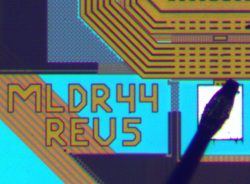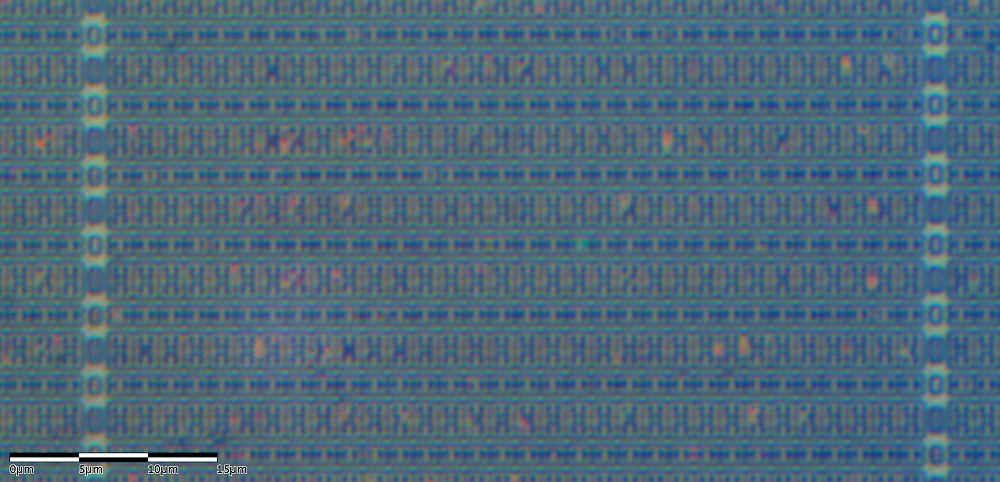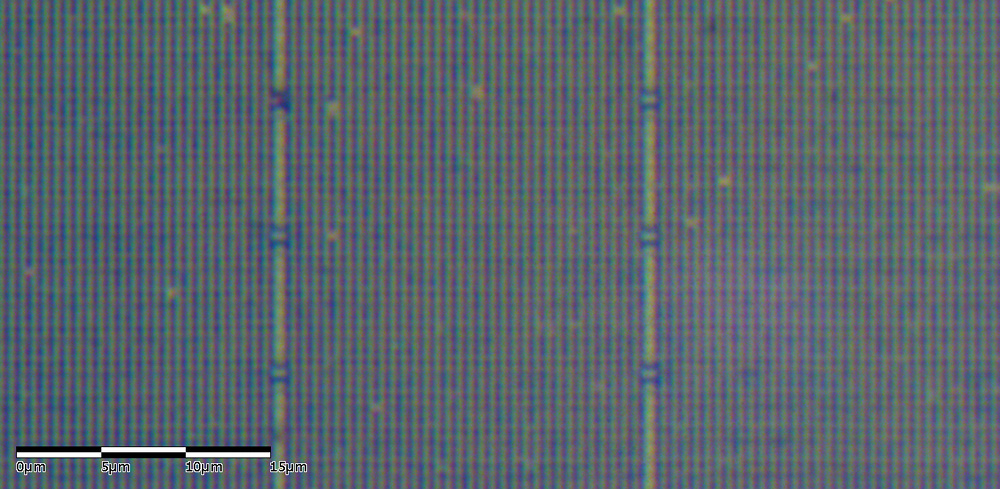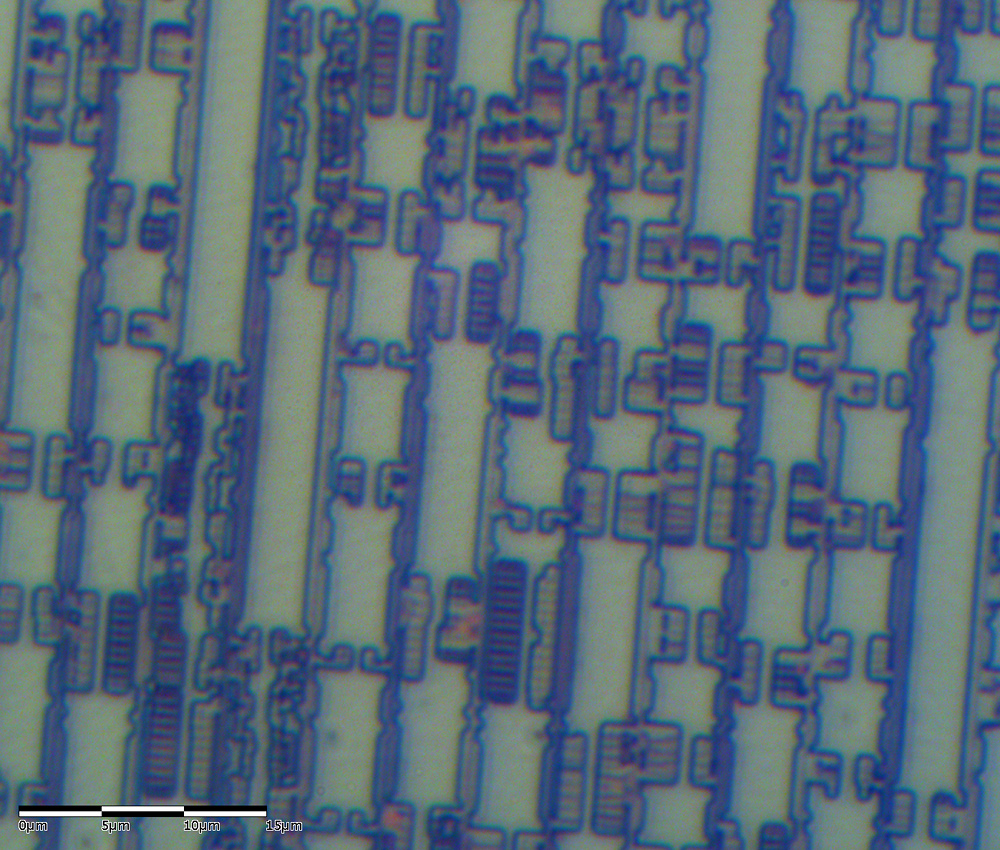1986WE91T: What is inside the Russian Armagh?
 After previous articles with internal microcircuits ( 1 , 2 ), many wrote that photos are certainly interesting, but I would like to know what is what.
After previous articles with internal microcircuits ( 1 , 2 ), many wrote that photos are certainly interesting, but I would like to know what is what.Today, the opportunity to satisfy this logical interest has finally appeared. Let's pick 1986EV91T - this is a Milandra microcontroller based on the ARM Cortex-M3 core (officially licensed). Inside - 128 KiB of flash memory, 32 KiB of static memory, hardware USB and 80 MHz core, manufactured using 180nm technology.
We look
The wire connecting the leads and the contact pads on the microcircuit remained: the case is cermet, and it was not necessary to poison it. All stuffing is hidden from our view by several layers of aluminum compounds. The size of the crystal - 6.54x5.9mm.
')
We poison the metallization ... Almost got to the very bottom:

And here is the lowest layer with transistors and a layer of polysilicon (the first level of connections and the gates of transistors):

Abstract crystal blocks

IO Cells & bonding pads - standard pieces of the circuit that control each leg of the chip, contain elements of protection against static electricity, can switch to the input and output mode. There are no transistors directly under the pads; when welding wire, they can be damaged.
4x32KiB flash - 4 standard flash memory blocks. Why is not one big? The flash compiler could not generate memory with a bus wider than 32 bits, and for performance reasons, 128 were needed.
32KiB SRAM - fast static memory, the state of which is not saved when you turn off the power.
256x32B ROM - boot memory. It is programmed at the factory with “jumpers” - and cannot be changed.
USB PHY is a physical USB interface. There are only receivers / transmitters of the signal, and the digital part of the USB controller is in the synthesized “porridge” in the center of the crystal.
Internal linear regulator (1.8V) - internal circuit for reducing the supply voltage to 1.8V. This is necessary because 1.8V transistors at work consume significantly less energy than 3.3V.
Battery domain is a clock-powered circuit, sharpened for ultra-low power consumption. There is a real-time timer, several bytes of memory, a generator on an external 32 kHz quartz.
RC Oscillators - internal RC generators (low and high frequency), allowing the use of a microcontroller without quartz.
System / USB PLL - frequency multiplication schemes for the system and USB. Allow for example from 10 MHz of quartz to receive 80 MHz system frequency, and 48 MHz for USB.
2xDAC - digital-to-analog converters.
2xADC - analog-digital converters. Empty seats - these were probably capacitors.
2xCAN SRAM - small blocks of static memory. These are probably buffers for 2 CAN controllers and so on.
Most of the above-mentioned blocks are not necessarily developed from scratch, but can be licensed at the factory, or purchased from companies that develop and sell IP. But in this case, all the digital blocks (Timer, CAN, USB, RAM / ROM controllers, external bus, etc.), analog ADC, DAC blocks, generators, PLL, built-in LDO, and even their own I / O platforms, and only core, DMA, UART, SPI.
Cell based synthesized logic is an automatically synthesized scheme from a Verilog description. Here, both the processor core itself and the peripheral controllers. The circuit is synthesized not directly from transistors, but from standard fixed-height cells — implementing various functions like AND, OR, triggers, and so on.
Take a closer look at the individual elements.
Boot romIf desired, the content can be "read." But of course, in this case it is not required, because Boot ROM is visible through the debugger.

Sram
The cell area is 9.14 μm 2 , corresponds to the technology 180-250nm.

Flash
You can immediately see why they flush a lot of microcontrollers into the microcontrollers — the cell takes up a much smaller area (because you only need one transistor per bit, and sometimes half of the transistor):

Synthesized logic
But the rows of standard cells, the main digital stuffing chips. Of course, it is no longer possible to figure out exactly what functions the cells perform here, since must see and metals.

That's all for now, I hope my story was interesting. Well, in the future - I will try to disassemble the insides of some kind of microcircuit is easier already at the level of individual transistors.
Source: https://habr.com/ru/post/178547/
All Articles